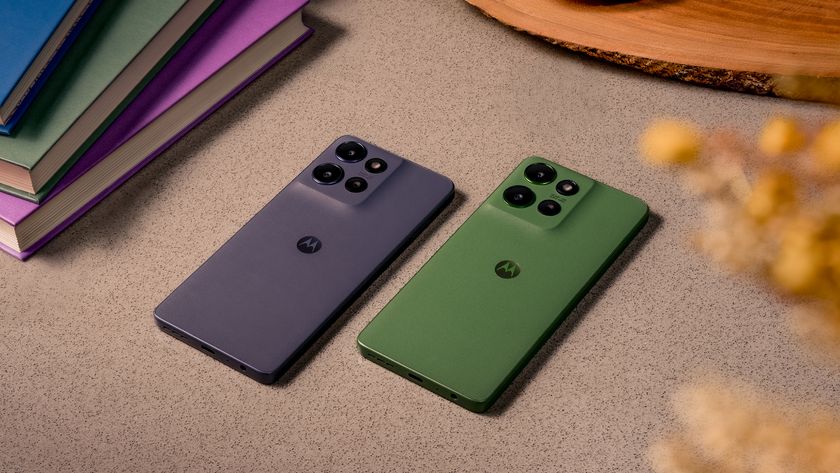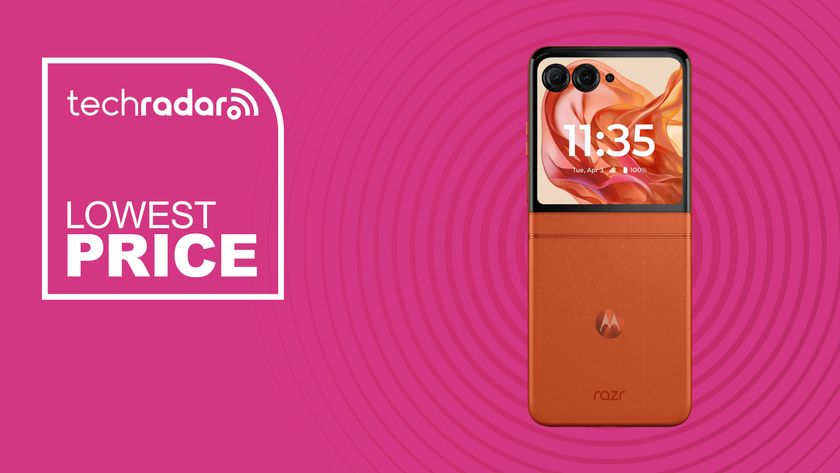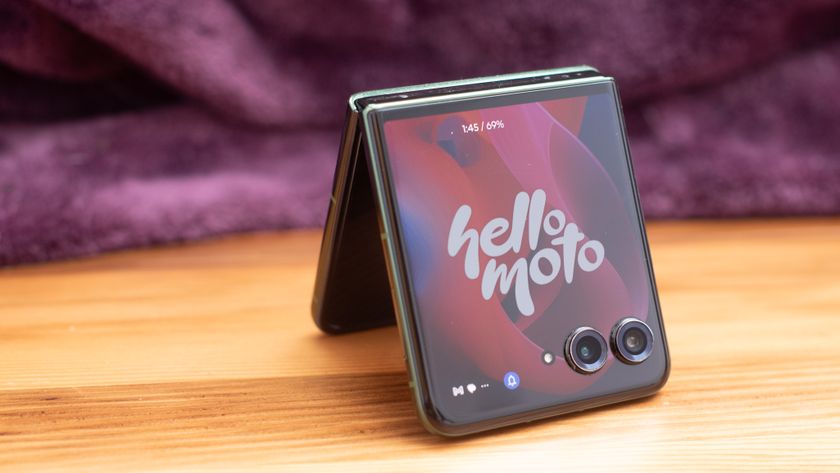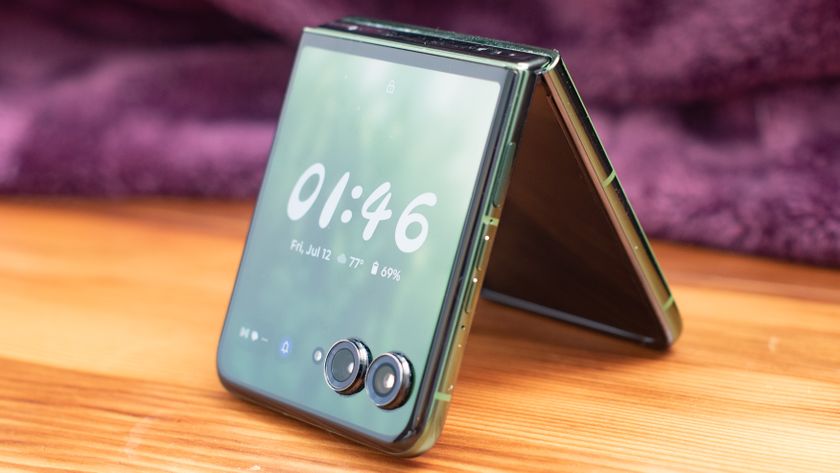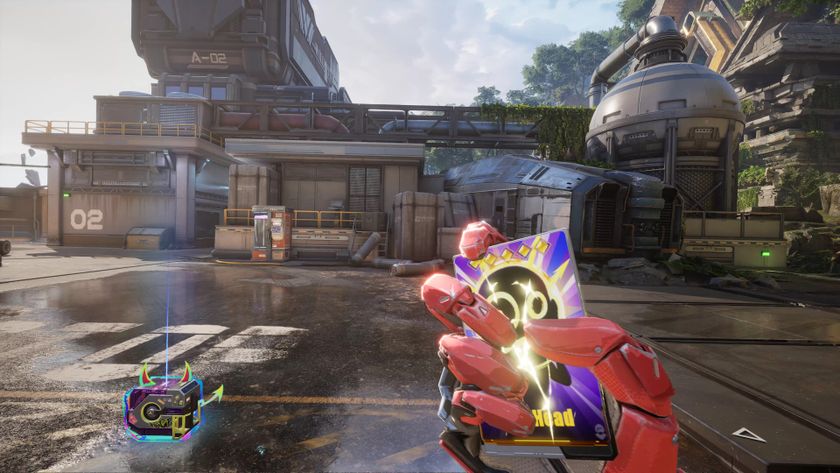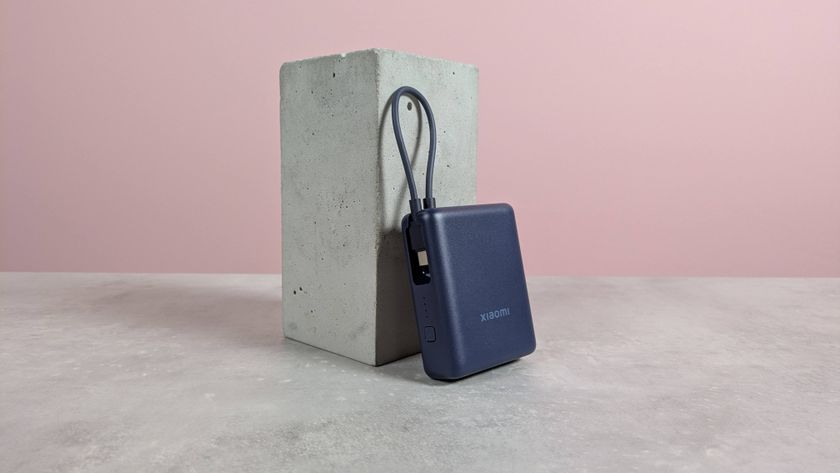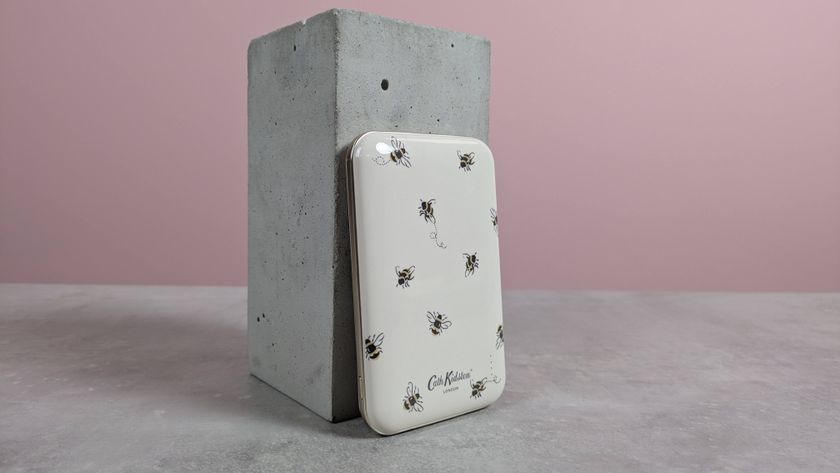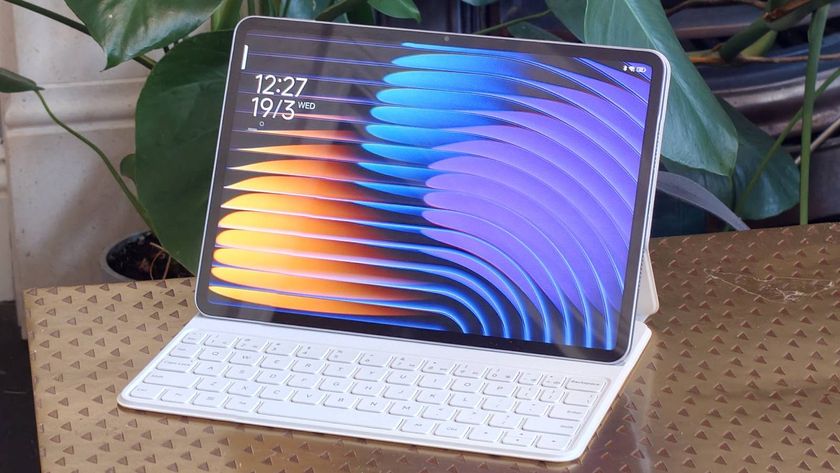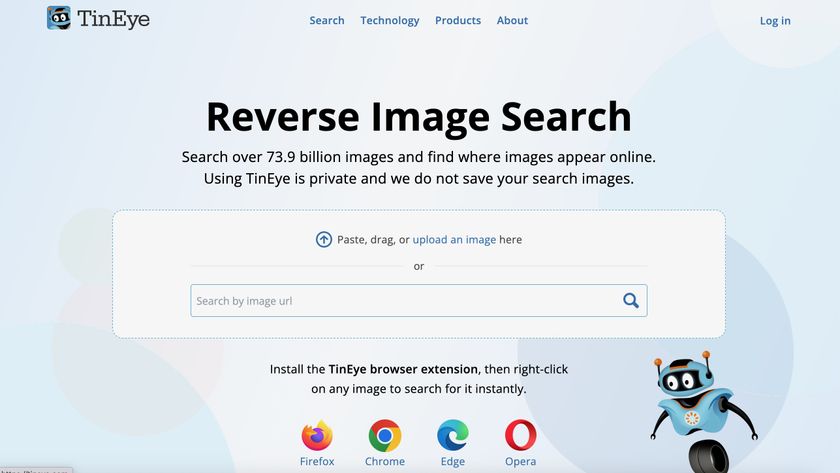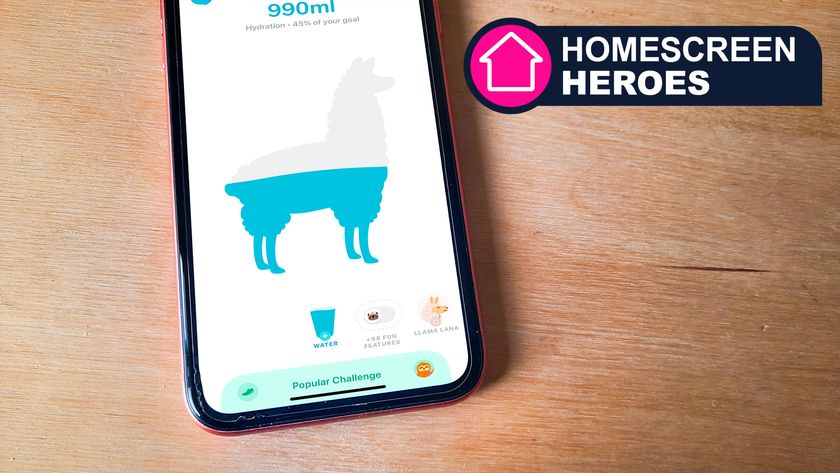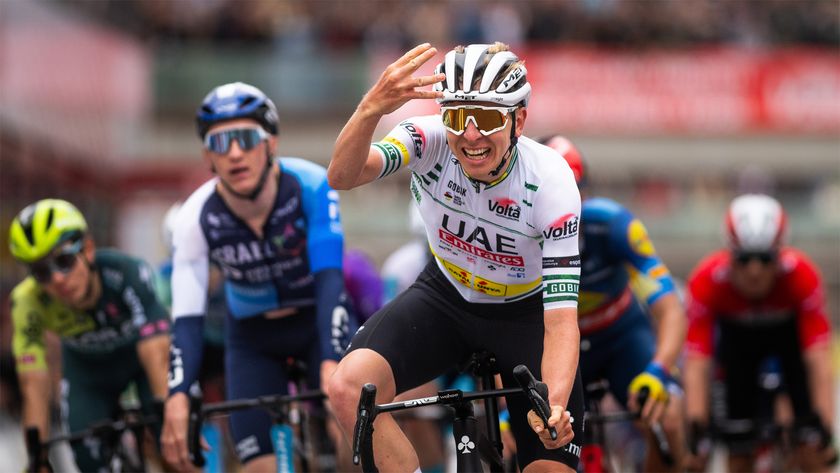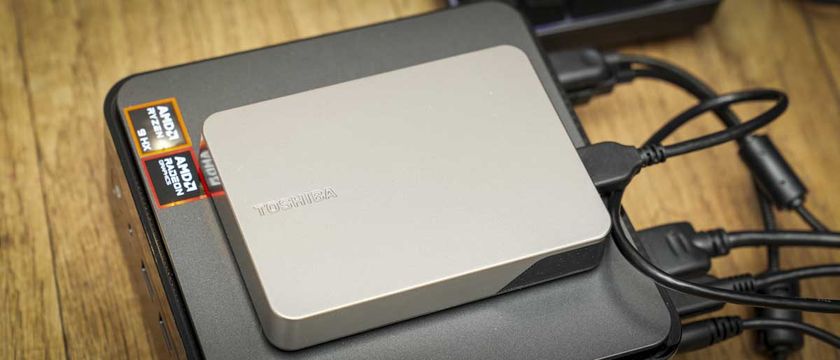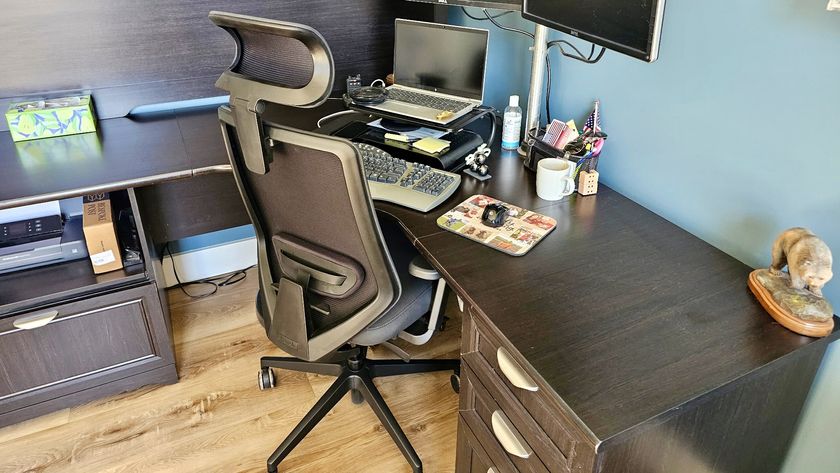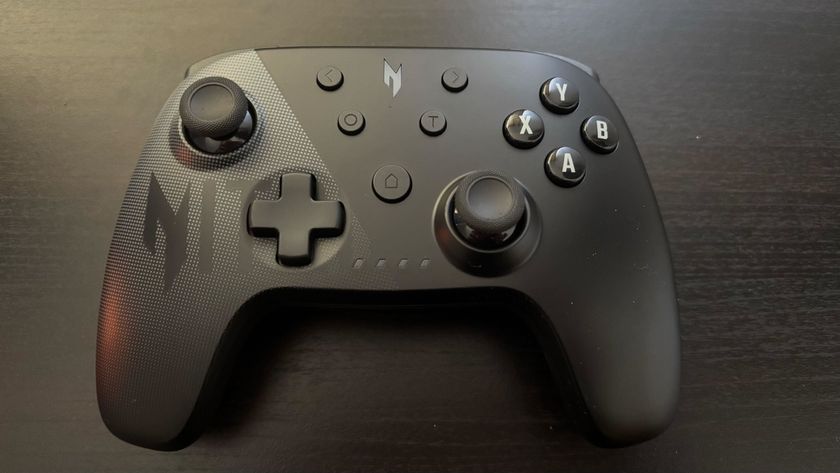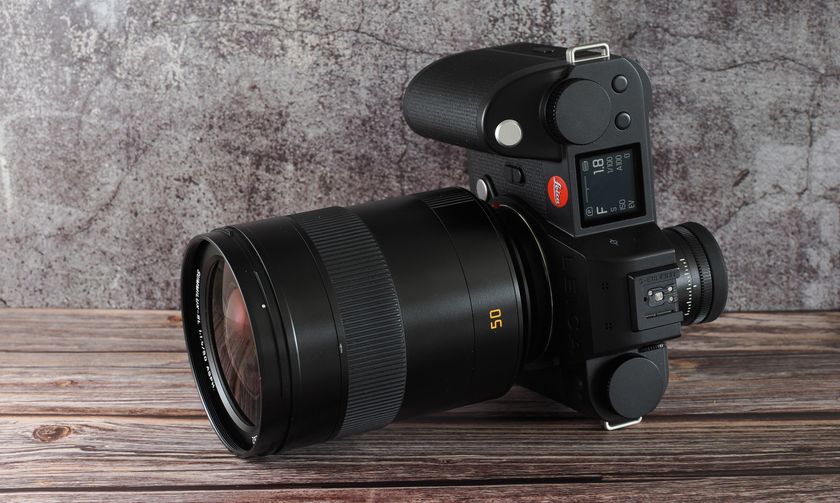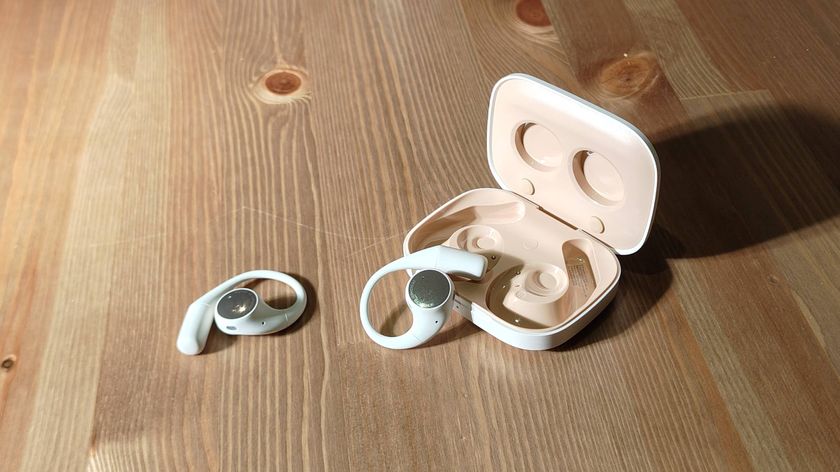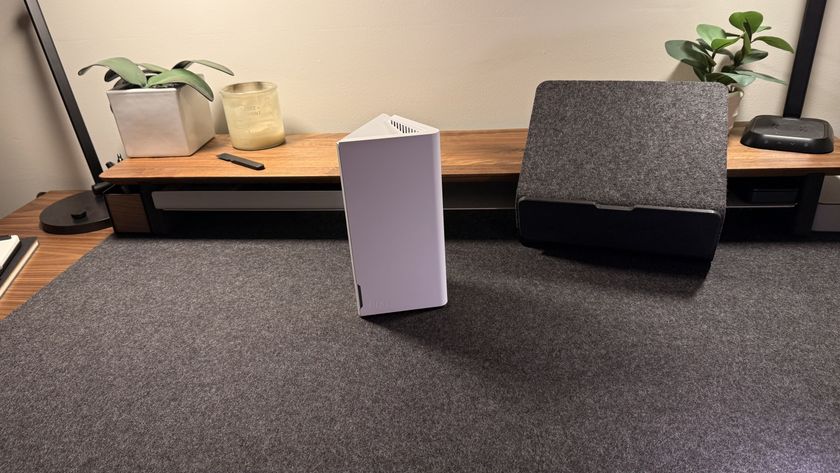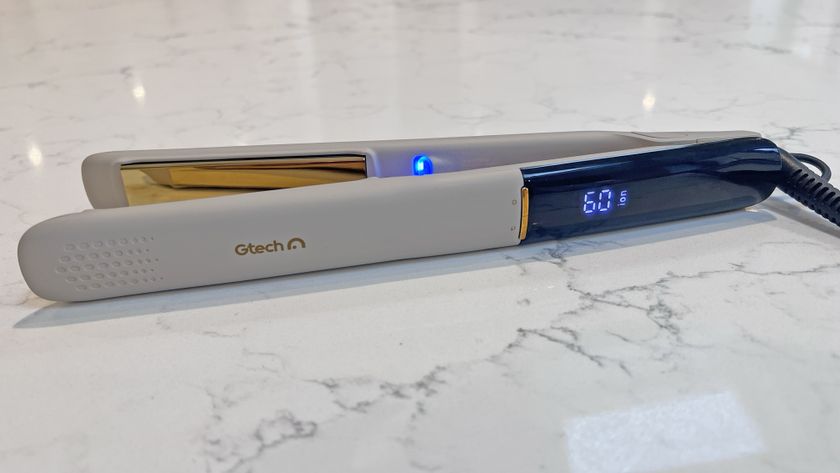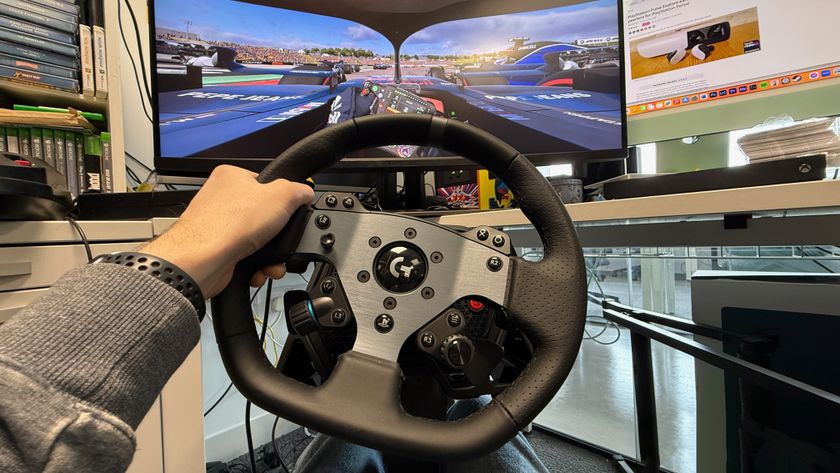TechRadar Verdict
Side by side with similarly affordable Sony Ericsson Walkmans, Nokias and Samsungs, which offer more functionality and a higher quality feel for your money, the U9 is underspecced and uninspired.
Pros
- +
External OLED display with touch music controls
- +
Mirrored metallic shell-look
- +
Music player onboard
- +
Budget price
Cons
- -
Disappointing 2-megapixel camera
- -
Design will put off some
- -
No 3G
- -
Keypad and shell feels plasticky
Why you can trust TechRadar
While Motorola has recently tried to revive past glories with its RAZR2, its latest MOTO U9 clamshell instead harks back to the less market-shaking but still much-admired design of its PEBL.
That pebble-like smoothness is much in evidence in the rounded curves of the U9, though two years on, it has had a significant makeover, along with a timely update under the bonnet too.
The MOTO U9 is positioned as a mass market mobile, aimed at style-aware younger mobile buyers with an eye-catching, glossy metallic-mirrored outer shell. Here, Motorola has built in a ‘hidden’ external display; you can’t normally see it until it’s activated, when it seems to appear out of nowhere, glowing through the shell. All very reminiscent of Sony Ericsson’s 2006-released Z610i, in fact.
When in music player mode, touch sensitive control keys also appear on the bottom of the external display, allowing users to change tracks, pause or play without flipping open the shell.
As well as its multi-format music player, the U9 has a standard 2-megapixel camera built in, which can handle basic video capture too. 3G connectivity is absent, however, on this phone, which is a quad-band GSM GPRS/EDGE device.
Priced around the £100 mark on pre-pay, Motorola isn’t pitching the U9 as a high-end fashionista favourite, and this is reflected in a mostly average set of features for a phone at this mark. On the roster, you do get stereo Bluetooth and USB connectivity, plus voice control functionality, and a few interesting Java applications.
Handling
Appearances count for plenty in the mobile business, particularly where the U9 is pitched. Available in glossy black, purple and pink, it is an eye-catching small phone, and the curvaceous design will certainly grab some buyer attention.
The soft rubber-textured feel of the original PEBL has been partially retained, on the back panel of the phone, although the flip casing is now shiny plastic. This gives it a lightweight feel – the phone weighs 87.5g – and, inevitably, less of a quality feel. The quirky pull-to-open hinge mechanism and magnetic clip of the PEBL are no more either; this is a straightforward flip phone design with nothing too fancy inside.
The numberpad inside the flip is also a no-nonsense design that reflects the RAZR legacy. The flat one-piece flat plastic keypad has a grid layout, with individual keys divided by slightly raised bumps. There’s a circular 5-way D-pad, flanked by navigation controls, including a pair of softkeys and a dedicated music player button. The D-pad can be programmed for function shortcuts, too.
The screen inside is a reasonably-sized 2-inch QVGA (240x320 pixels) 262k-colour TFT, which is bright and clear enough.
Motorola has introduced a refreshed user interface for the U9, although nothing stunningly radical; Motorola has adopted some menu conventions widely used by other mobile makers rather than re-inventing the wheel. The menu system – an icon-based main menu grid, that can also be switched to a numbered list or carousel large icon style, plus sub menus using numbered lists as required - make the U9’s features very easy to get to grips with.
What will grab most attention is on the outside though. The external screen, veiled by the semi-transparent casing, is a 1.45-inch, 128x160 pixel 65K-colour OLED. This screen isn’t the biggest, most detailed array around, but the way it fades through the mirrored-look shell gives it some talking-point appeal. It’s not particularly bright or clear, though.
The external screen comes into play when calls or messages are received, or when the music player is activated. When the music player comes on, the screen’s touch-sensitive forward, back, play/pause controls appear too. You can view tune details, skip tracks and stop the music without having to open the shell.
With no haptic feedback (vibrations to confirm button activation), and slight delay between pressing and action, you have to be careful to get your button pressing right, or you may end up double-pressing or unintentionally skipping or stopping tracks.
Naturally, though, you can activate a button lock (with a side-key press) to prevent accidental shuffling in your pocket.
The dedicated music player key is the quickest way to get the sounds started. When tracks are playing, the D-pad takes care of music controls, until you close the flip. As usual, you can play tunes in the background while other apps are used.
The music player built into the U9 is a quite a decent tune-player, as it turns out. It can handle multiple digital music formats, including MP3, AAC, AAC+, eAAC+ and WMA files. Tunes can be synced with Windows Media Player 11 on a PC, or dragged and dropped to the phone’s memory card. It supports MicroSD cards up to 4GB, which will need to be used if you want more than a handful of tunes – the phone has just 25MB of internal user memory.
The user interface is rather functional; tunes are served up in a list of regular categories – playlists, artists, albums, genres, composers, plus recently played tunes, and you can choose to shuffle tracks.
Unfortunately, Motorola has chosen to double up the microUSB socket as the earphone connector, making it not so easy to upgrade the average set supplied to better quality ear-gear that has standard 3.5mm connectors. Still, the performance is reasonable through USB-connected earphones, and you can upgrade to stereo Bluetooth wireless ones if you can’t get a USB adapter – Motorola makes some very chic sets if you want ‘phones to match. Alternatively, there’s the loudspeaker – though this delivers typically tinny average mobile-standard playback.
As well as controlling tunes, the external screen also allows you read and to respond to texts too without opening the shell. You can use the side select key and volume controls to scroll through a list of options, including replying by sending pre-defined messages. You can add your own set-piece texts/excuses too, if you like.
You can also use the peek-a-boo external display for framing self-portraits. The phone’s 2-megapixel camera perches above it, pointing away when opened. This is a disappointing snapper, very limited compared to other competitors, even within its budget price range.
There are basic controls – no dedicated buttons, no autofocus, no flash, and minimal settings adjustments. Not surprisingly, results from the camera are no great shakes. Picture quality is no more than average in good quality lighting conditions, but lower illumination results in grainy, poor quality images.
The U9 can shoot video too, but footage is again on the lower end of the quality scale, shooting 176x144 pixels resolution at 15fps max. Of course, this looks poor played back on any screen.
Motorola has included some welcome voice control and ‘talking phone’ message reader functionality to the U9, plus a voice recorded option – activated by another side panel button. There are a pocketful of other office tools within too; there’s an email client, calendar world clock and calculator functions.
A smattering of web-based Java applications offer some useful mobile internet shortcuts to complement the phone’s Wap browser. There’s a eBay Pocket Auctions tracker app, a Rough Guides city guide application, plus quick search options for Google and Yahoo! Motorola has also added its quick set up app for sorting out data connectivity via GPRS, and a messaging app. Our early review model has five games embedded, too.
With a fairly modest price tag and feature run-down, it’s still pleasing to report a decent voice call performance from the U9. Sound quality for making and taking calls is perfectly acceptable in all conditions.
Battery life is respectable too – Motorola quotes up to 350 hours of standby time or 430 minutes of talktime between charges. With limited battery-sapping functionality apart from the music player, the U9 should keep going sufficiently long to make charging necessary only after a few days in action.
Summary
Motorola could sorely do with another hit phone – but the MOTO U9 isn’t the type of mobile that’s going to alter its fortunes any time soon. The U9 may have moved on from the Motorola PEBL in terms of features, but compared to what else is vying for buyers’ attention right now, the phone’s specs are decidedly average, with the camera performance disappointing.
Sure the external display is a nice touch, and the shiny rounded shell might win over some younger mobile users or those looking for some eye-candy on a budget. The music player is presentable too. But the phone feels like an average budget clamshell.
Side by side with similarly affordable Sony Ericsson Walkmans, Nokias and Samsungs, which offer more functionality and a higher quality feel for your money, the U9 is underspecced and uninspired.
Looks: 3.5/5
Ease of use: 3.5/5
Features: 2.5/5
Call quality: 4.5/5
Value: 3.5/5
Network availability: O2, Vodafone, T-Mobile, Orange
The TechRadar hive mind. The Megazord. The Voltron. When our powers combine, we become 'TECHRADAR STAFF'. You'll usually see this author name when the entire team has collaborated on a project or an article, whether that's a run-down ranking of our favorite Marvel films, or a round-up of all the coolest things we've collectively seen at annual tech shows like CES and MWC. We are one.

